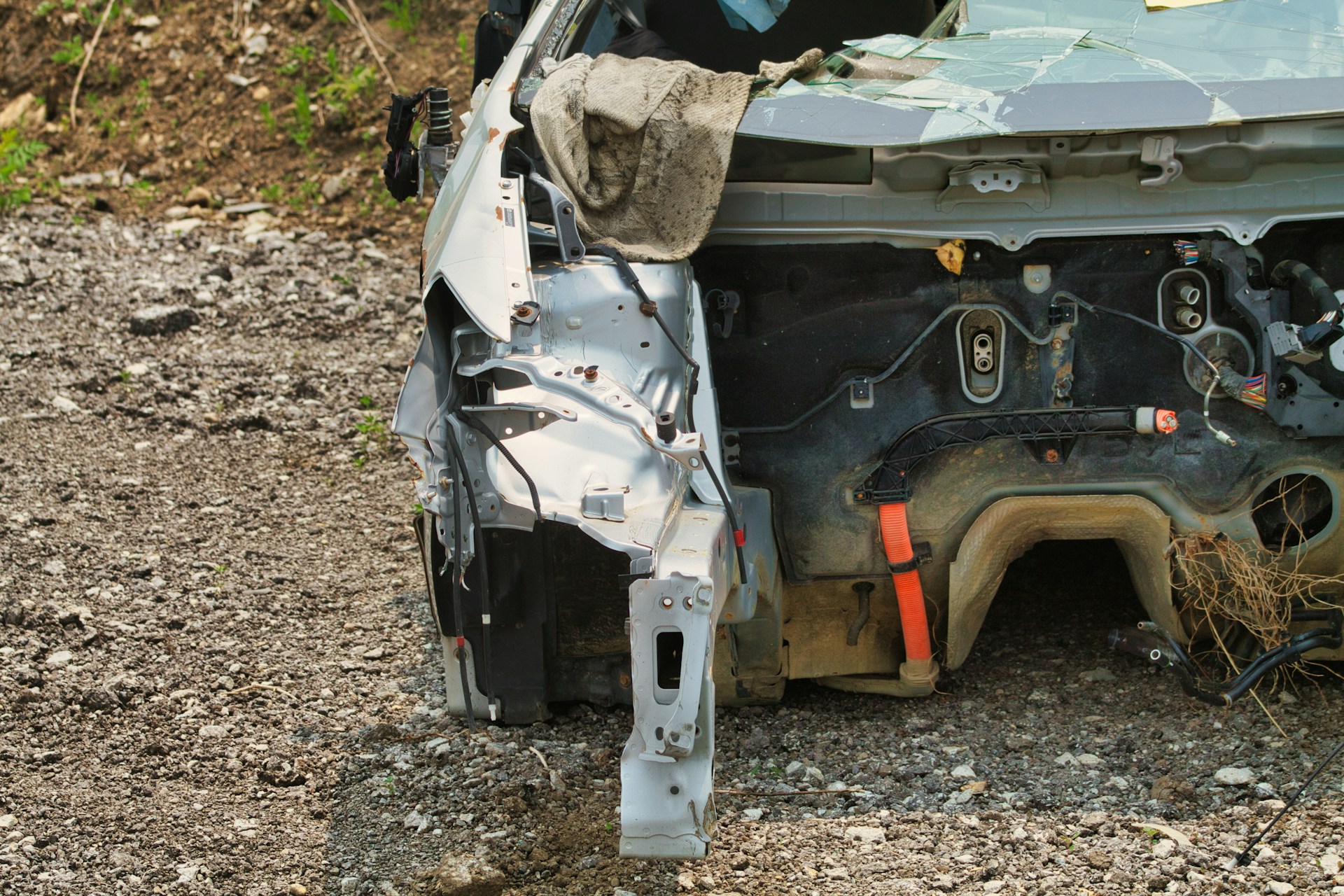Contents
Navigating the complexities of vehicle titles can be challenging, especially when dealing with a salvage title. Understanding how to get a salvage title cleared is crucial for car owners who wish to restore their vehicle’s legal status. This comprehensive guide by SCA will unravel the steps necessary to transform a salvage title into a clean or rebuilt title, enhancing both the legality and value of your vehicle. Transforming a salvage car into one with a rebuilt salvage title can significantly influence the vehicle cost. The transition requires submitting more forms and undergoing detailed inspections. Once approved, the car is issued a new title, reflecting its rebuilt status. This elevates the car from a mere salvage vehicle to a legally recognized and valued rebuilt title car, ready for safe operation and potential resale.
Table of Content
- What Is a Salvage Title on a Car?
- Clean Title vs Salvage Title
- Rebuilt Title vs Salvage Title
- The Steps to Removing a Salvage Title
- How Does a Salvage Inspection Work?
- Title Washing
- FAQ
What Is a Salvage Title on a Car?

A salvage title is assigned to a vehicle that has been declared a total loss by an insurance company. This often occurs following significant damage from an accident, flood, or other incidents. Salvage titles indicate that the car has sustained damage exceeding a certain percentage of its value, rendering it unfit for driving in its current state. In most states, to get a salvage title, the vehicle must have suffered major physical damage, typically from a major accident. Such salvage vehicles are assessed by insurance companies and deemed not worth the cost of repair. These vehicles, though significantly impaired, may still hold value for parts or potential restoration. However, their status as total losses ensures a distinct separation from regularly operable vehicles in terms of legality and safety.
Clean Title vs Salvage Title
A clean title signifies that a vehicle has not experienced any major damage to compromise its safety and operation. In contrast, a salvage title reveals that the car has been severely damaged. While a clean title vehicle is typically more desirable for purchase and sale, a salvage title car may present a more affordable option, albeit with its own set of challenges. For a salvaged vehicle to regain normal conditions, owners must submit proof of repairs to the state’s title department. The salvage title affects insurance rates and coverage options significantly; often, insurance companies are hesitant to offer comprehensive policies. For those looking to purchase such a vehicle, it’s crucial to understand the insurance implications and the additional steps required to legally drive the vehicle. The process involves a careful assessment by the insurance company to determine the extent of coverage for the rehabilitated car.
Rebuilt Title vs Salvage Title
A rebuilt title is awarded to a salvage vehicle after it has undergone all the necessary repairs and inspections to ensure it is safe for road use. Unlike a salvage title, a rebuilt title allows the car to be driven legally, although its history of significant damage remains a part of its record. The procedure to obtain a rebuilt title involves meticulous documentation and verification of the repaired vehicle by the Department of Motor Vehicles. It’s crucial to accurately document the car’s repair journey to ensure the vehicle’s title reflects its new status. A rebuilt title affects a car’s value and insurance, as it signifies that the vehicle has been significantly damaged and then restored. Despite this, a properly repaired and certified rebuilt vehicle can still be a reliable and cost-effective option for many drivers.
The Steps to Removing a Salvage Title
To remove a salvage title, one must first repair the vehicle to a roadworthy condition. This procedure involves submitting proof of repairs and ownership to the state’s Department of Motor Vehicles, followed by a full inspection. Once the vehicle passes this inspection, it can qualify for a rebuilt title. In most states, this repair work must be carried out by licensed rebuilders to ensure compliance with safety standards. The repaired car’s history is documented meticulously, including other documentation that tracks the repair process. This is vital for the car’s future sale, as potential buyers will be informed of its past status and the extent of repairs. A car transitioning from a salvage to a rebuilt title represents not just a physical restoration but also a legal rebranding, offering a new lease of life to the vehicle.
After repairs and inspections are done, the focus turns to getting through the bureaucratic steps. To change the classification of a title, the state’s Department of Motor Vehicles needs a written request, which includes a thorough review procedure. This step is very important because it’s not just about fixing up the car’s appearance; it also involves making sure it’s safe to drive. The DMV carefully checks the car to make sure it not only meets safety and mechanical standards but also follows the law for being repaired. Once the DMV agrees to this change, it will be a big step forward for the car, moving from a damaged past to a future that follows the law. This endorsement is more than just a formality; it shows that the vehicle has changed and is ready to rejoin the automotive environment as a safe, trustworthy, and legally recognized entity.
How Does a Salvage Inspection Work?
A salvage inspection is a thorough examination conducted by a certified mechanic or an inspection facility designated by the state. This inspection scrutinizes the repair process, ensuring all repairs are up to standard. It also verifies the vehicle identification number (VIN) and odometer reading to prevent title fraud. Once the vehicle inspected meets all necessary criteria, the salvage title removal process advances to the final paperwork. This stage involves submitting the salvage certificate and proof of repairs. The inspection fee varies by state but is necessary for legitimizing the vehicle inspection process. The standard inspection is crucial for ensuring the safety and legality of the vehicle on the road. Successful completion of this step grants a green light for the issuance of a new title, marking the vehicle’s transition from a salvage status to a roadworthy, insurable asset.
Title Washing

Title washing is a serious crime where the history of a salvage title vehicle is illegally altered to appear as a clean title. This process involves manipulating or concealing a vehicle’s history to sell it at a higher price. Buyers must be vigilant and cross-reference the car’s history to avoid such deceptive practices. In cases where a salvage title car is involved, title washing may be used to disguise the fact that an insurance company has previously declared the vehicle a total loss. This act not only misleads potential buyers about the car’s past but also affects the prospect of obtaining liability insurance, as insurers are cautious of cars with a hidden history of extensive damage. Therefore, it’s crucial for buyers to thoroughly investigate the background of a car, especially if there’s a possibility it was once deemed a total loss, to ensure the sale is transparent and free from the taint of title washing.
Understanding the distinctions between salvage, rebuilt, and clean titles is essential for any car owner or buyer. The process of getting a salvage title cleared involves a combination of meticulous repairs, thorough inspections, and diligent paperwork. Navigating this procedure correctly ensures that a formerly damaged vehicle can be driven legally and safely.
FAQ
Can Rebuilt Titles Be Trusted?
Rebuilt titles, while indicating a history of significant damage, can be trusted if the vehicle has passed all necessary inspections and repairs. However, buyers should always conduct due diligence.
How Much Value Does Your Car Lose If It Has a Rebuilt Title?
Cars with rebuilt titles typically lose a significant portion of their value compared to those with clean titles, due to their history of major damage and repairs.
Can You Drive a Car with a Salvage Title?
In most jurisdictions, you cannot legally drive a car with a salvage title. It must first undergo repairs and inspections to obtain a rebuilt title.



